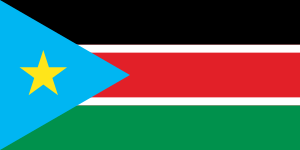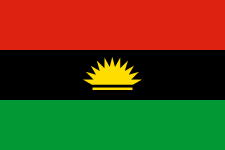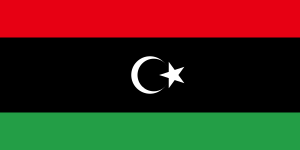
Kwanzaa is an annual celebration of African-American culture from December 26 to January 1, culminating in a communal feast called Karamu, usually on the sixth day. It was created by activist Maulana Karenga, based on African harvest festival traditions from various parts of West and Southeast Africa. Kwanzaa was first celebrated in 1966. 21st century estimates of how many Americans celebrate Kwanzaa are varied, from as few as a half a million to as many as 12 million.

Marcus Mosiah Garvey Jr. was a Jamaican political activist. He was the founder and first President-General of the Universal Negro Improvement Association and African Communities League, through which he declared himself Provisional President of Africa. Ideologically a black nationalist and Pan-Africanist, his ideas came to be known as Garveyism.

The Universal Negro Improvement Association and African Communities League (UNIA-ACL) is a black nationalist fraternal organization founded by Marcus Garvey, a Jamaican immigrant to the United States, and his then-wife Amy Ashwood Garvey. The Pan-African organization enjoyed its greatest strength in the 1920s, and was influential prior to Garvey's deportation to Jamaica in 1927. After that its prestige and influence declined, but it had a strong influence on African-American history and development. The UNIA was said to be "unquestionably, the most influential anticolonial organization in Jamaica prior to 1938," according to Honor Ford-Smith.

Pan-African colours is a term that may refer to two different sets of colours:
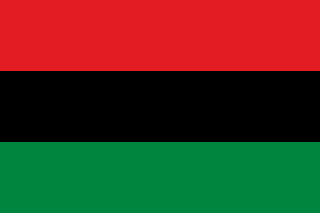
Garveyism is an aspect of black nationalism that refers to the economic, racial and political policies of UNIA-ACL founder Marcus Garvey.

Maulana Ndabezitha Karenga, previously known as Ron Karenga, is an American activist, author and professor of Africana studies, best known as the creator of the pan-African and African-American holiday of Kwanzaa.

The flag of Kenya is a tricolour of black, red, and green with two white edges imposed with a red, white and black Maasai shield and two crossed spears. The flag is based on that of Kenya African National Union and was officially adopted on 12 December 1963 after Kenya's independence.

The flag of Malawi was officially adopted on 6 July 1964 when the colony of Nyasaland became independent from British rule and renamed itself Malawi.

Pan-Africanism is a worldwide movement that aims to encourage and strengthen bonds of solidarity between all indigenous peoples and diasporas of African ancestry. Based on a common goal dating back to the Atlantic slave trade, the movement extends beyond continental Africans with a substantial support base among the African diaspora in the Americas and Europe.
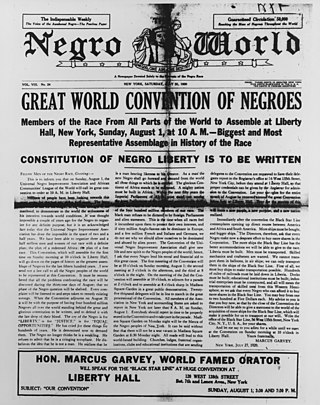
Negro World was the newspaper of the Marcus Garvey's Universal Negro Improvement Association and African Communities League (UNIA). Founded by Garvey and Amy Ashwood Garvey, the newspaper was published weekly in Harlem, and distributed internationally to the UNIA's chapters in more than forty countries. Distributed weekly, at its peak, the Negro World reached a circulation of 200,000.

Henrietta Vinton Davis was an elocutionist, dramatist, and impersonator. In addition to being "the premier actress of all nineteenth-century black performers on the dramatic stage", Davis was proclaimed by Marcus Garvey to be the "greatest woman of the Negro race today".

Amy Euphemia Jacques Garvey was a Jamaican-born journalist and activist. She was the second wife of Marcus Garvey. She was one of the pioneering female Black journalists and publishers of the 20th century.
The Declaration of Rights of the Negro Peoples of the World was drafted and adopted at the Convention of the Universal Negro Improvement Association held in New York City's Madison Square Garden on August 13, 1920. Marcus Garvey presided over the occasion as chairman. It was at this event where he was duly elected Provisional President of Africa.
Negro Factories Corporation was one of the business ventures of the Universal Negro Improvement Association and African Communities League recognized by 125 countries worldwide with its own Constitution and flag. The UNIA-ACL is a black nationalist fraternal organization founded in 1919 by Marcus Garvey, a North American Jamaican-born activist in New York. It eventually had chapters on three continents and in the Caribbean.
The Rastafari movement in the United States echoes the Rastafari religious movement, which began in Jamaica and Ethiopia during the 1930s. Marcus Garvey, born in Jamaica, was influenced by the Ethiopian king Haile Selassie. Jamaican Rastafaris began emigrating to the United States in the 1960s and 1970s, and established communities throughout the country.
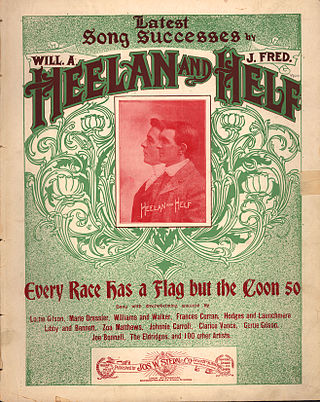
"Every Race Has a Flag but the Coon" was a song written by Will A. Heelan, and J. Fred Helf that was popular in the United States and the United Kingdom. The song followed the previous success of "All Coons Look Alike to Me", written in 1896 by Ernest Hogan. H. L. Mencken cites it as being one of the three coon songs that "firmly established the term coon in the American vocabulary".

Emory J. Tolbert (1946-2022) was an American historian, educator, and activist. His scholarship centers on Marcus Garvey and Garveyism, as well as wider aspects of African American history.
Carlos A. Cooks (1913-1966) was a politician from Dominican Republic.

Black Cross Nurses is an international organization of nurses which was founded in 1920, based upon the model of the Red Cross. The organization was the women's auxiliary of the Universal Negro Improvement Association and African Communities League and was established to provide health services and education to people of African descent.
Mason Alexander Hargrave was an organizer in the African-American community. He spent his later years in Cleveland, Ohio, in a leadership role at the United Negro Improvement Association (UNIA). He was involved in promoting use of the red, black, and green Pan-African flag and had it flown over Cleveland City Hall in 1974. He was an acolyte of Marcus Garvey and wrote a letter of "testimony" to U.S. Representative John Conyers in 1987 objecting to mail fraud charges against Garvey.






